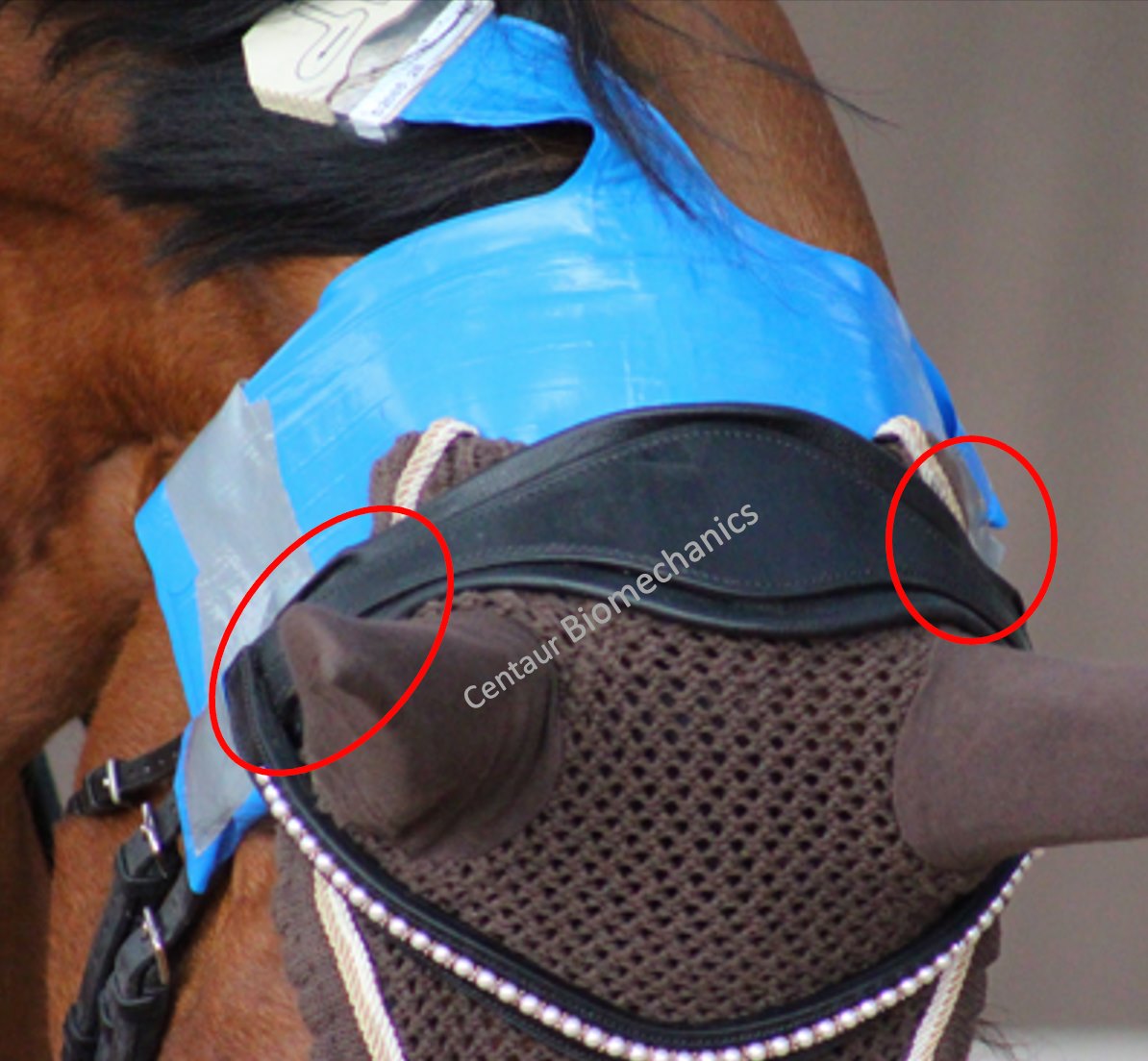
During ridden exercise, an equine fly veil (from here on referred to as a bonnet), can be used for multiple reasons; to prevent fly’s and bugs entering the ear space and causing irritation to the horse, in some cases they are used to reduce the external noises and sometimes just for fashion! Whilst there is a paucity of evidence on the effect that bonnets have on the horse from a psychological perspective, previously we have looked at the pressure distribution beneath a bonnet and its effect on equine locomotion.
Bonnets come in all shapes and sizes, varying materials, and some can feature a braided trim. The braiding can vary in thickness and can provide a mechanism (due to weight), to stabilise and prevent the front of the bonnet flapping up during locomotion, especially when jumping. In addition, riders can express themselves in terms of colour preferences. In our pilot study, we used a pressure mat to quantify the pressure distribution beneath a headpiece with and without a bonnet, in addition we also quantified limb kinematics in elite dressage horses.
When using a bonnet, as a function of the braiding running beneath the headpiece, in the region of the TMJ, resulted in areas of high pressures. From our previous blog season, we discussed the effect that headpiece design can have on head pressures and locomotion (1). In brief; in trot peak pressures beneath the headpiece occur soon after midstance (75% of stance) for both diagonal support phases. The magnitude of pressure is directly influenced by the fit and design of the headpiece (and attachment and fit of the browband). Meaning that every time the horse loads its limbs (every stride), wearing a headpiece and/or browband which is incorrectly fitted could cause areas of high pressure beneath the headpiece, every stride (1). The magnitude of pressures are further influenced by the fit and design of a bonnet, particularly those that feature a braided trim running beneath the headpiece. Previously we have demonstrated the effect that headpiece pressures induced by headpiece design, in the TMJ region, can have on equine locomotion (see previous blog) (1). A similar pattern, altered limb kinematics was observed in horses who had localised pressures in the TMJ region as a result of the braiding from the bonnet (2).
The findings of which highlight the importance of correct bridle fit but also, when using a bonnet, it is important to consider the fit and design of the bonnet and the effect that it may have on bridle fit, and consequently equine comfort and performance.
Some key points:
- Ensure that there is no braiding running beneath the headpiece.
- Ensure that the bonnet fits the horses’ ears – the horses ear can move 180 degrees using 10 different muscles, if the bonnet is too small it can restrict ear movement.
- Check if the bonnet has raised the headpiece, which can alter the height of the bit in the oral cavity.
In swimming, swimmers have been reported to suffer from supraorbital neuralgia (pain above the eye) headaches (3), this is thought to be due to the tightness of the goggles. Although we cannot confirm this is the case in horses, cautiously applying similar principles, we should not underestimate the effect that a bonnet which creates localised pressures, which are of a magnitude to cause discomfort can have on equine welfare, comfort, and performance. Horses will develop a locomotor strategy to compensate and alleviate any discomfort, therefore correct fit of the equipment here bonnet, but also bridle and saddle etc is essential.
Hope this blog is of interest. Please share to raise awareness on the importance fo correct tack fit.
Kind Regards
Dr Russell MacKechnie-Guire
Www.centaurbiomechanics.co.uk
Previous blogs http://www.centaurbiomechanics.co.uk/blog/
#equineresearch #biomechanics #centaurbiomechanics #equinephysiotherapy #equinetherapist #onlinecourses
1. Murray R, Guire R, Fisher M, Fairfax V. A Bridle Designed to Avoid Peak Pressure Locations Under the Headpiece and Noseband Is Associated With More Uniform Pressure and Increased Carpal and Tarsal Flexion, Compared With the Horse's Usual Bridle. Journal of Equine Veterinary Science. 2015;35(11-12):947-55.
2. data from 2015 - unpublished
3. O'Brien J. C. J. Swimmer's headache, or supraorbital neuralgia. . Proceedings (Baylor University Medical Center). 2004;17(4: 418–9.